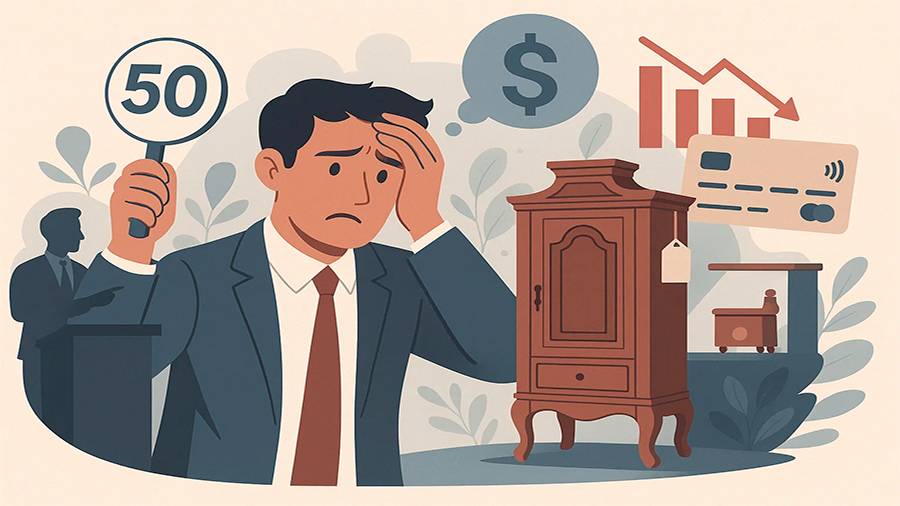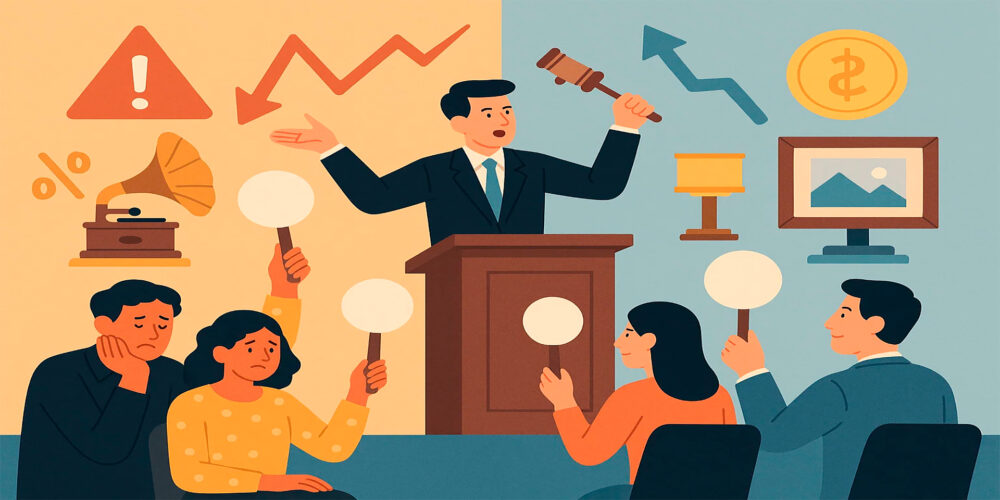Risks And Rewards Of Participating In Auctions
Auctions have always carried a certain thrill. The raised paddles, the fast calls from the auctioneer, and the competition to outbid rivals all combine into a mix of excitement and tension. Beyond the atmosphere, auctions can offer real opportunities. Collectors find rare items, investors chase valuable assets, and businesses secure equipment at lower costs. But the risks are just as real. Overbidding, hidden costs, and unpredictable market swings can turn what seems like a win into a financial setback. Understanding both the rewards and the risks is essential before stepping into the auction world, whether in person or online.
Why Auctions Can Deliver Unique Rewards
The most obvious reward of participating in auctions is access. Many items that appear at auction never hit traditional markets. From rare gemstones to vintage cars, auctions provide buyers with chances to acquire assets unavailable anywhere else. Prices can also be favorable. Because auctions rely on competition, some items sell below expected value if bidding remains limited. For those with experience, spotting undervalued lots is a way to build collections or portfolios at prices well below market averages. Auctions also create transparency. The bidding process is open, meaning everyone sees the offers, reducing the opacity that often clouds private negotiations. For investors, auctions bring liquidity. Sellers convert assets into cash quickly, while buyers gain immediate ownership without drawn-out contracts. These combined factors make auctions attractive to those who thrive in competitive yet structured environments, where sharp decisions can lead to significant rewards.
Access To The Rare
Many collectors rely exclusively on auctions to find pieces that fit their criteria. Whether it’s a specific diamond cut or a unique artwork, auctions act as the marketplace of last resort for items with limited supply.

The Emotional High Of Winning
Another powerful reward is psychological. Winning an auction brings a rush of satisfaction, tied not just to ownership but to competition. Outbidding rivals creates a sense of achievement, even if the purchase was not entirely rational. This emotional high is part of what makes auctions both rewarding and risky. For some, the atmosphere itself is addictive, pulling them back repeatedly. This dynamic explains why auctions remain popular across cultures and industries. The act of winning becomes as valuable as the item acquired, driving participation even among those who may not have entered for purely financial reasons. The social dimension of auctions also plays a role, with recognition and status attached to visible wins. This adds another layer to the reward structure, blending financial gains with personal validation.
The Social Dimension
In elite auctions, recognition matters. Being the winning bidder can carry prestige, signaling wealth, taste, or influence. These social rewards cannot be separated from the financial ones.
Recognizing The Risks Of Overbidding
The same competitive environment that creates excitement also creates risk. Overbidding is one of the most common pitfalls in auctions. The fast pace and emotional pressure make it easy to exceed budgets. Many participants enter with a clear limit but abandon it when the thrill takes over. This behavior erodes returns, especially for investors who rely on resale value. Paying above market price eliminates the financial advantage of auctions, leaving the buyer exposed to losses. Overbidding can also trap participants in debt if they rely on credit to finance their purchases. Once the adrenaline fades, the reality of repayment can overshadow the excitement of winning. Recognizing this risk requires discipline, preparation, and sometimes the ability to walk away, even when the competition tempts otherwise.
Sticking To Limits
The simplest protection is entering with a firm spending cap. Experienced participants set limits based on independent valuations, not the heat of the moment. Walking away at the right time preserves both budgets and confidence.
Market Fluctuations And Their Impact
Another major risk in auctions lies in changing market conditions. Values of assets like art, gemstones, or real estate are not fixed. A piece bought at what seems like a fair price today may lose value if demand shifts tomorrow. For speculative buyers, this risk is especially high. Auction markets often move with broader trends. During booms, prices surge as bidders drive competition higher. During downturns, values can fall sharply, leaving those who bought at peak exposed to losses. Unlike retail purchases, auctions amplify volatility because prices are determined in the moment, reflecting sentiment rather than steady fundamentals. This makes auctions both exciting and dangerous—every bid is a gamble not only on the item but on the future direction of its market.
The Role Of Timing
Buying at the right moment can transform an auction into a bargain. Buying at the wrong one can trap a bidder with an asset worth less than they paid. Timing, often outside individual control, remains one of the toughest risks to manage.
Hidden Costs That Buyers Overlook
Winning a bid is only part of the financial equation. Buyers must also account for premiums, fees, and taxes. Auction houses charge commissions on top of the hammer price, sometimes adding significant percentages. Transport, insurance, and certification costs may follow, especially for high-value items. These hidden costs transform what looks like a winning bid into a less favorable outcome once the final bill arrives. New participants often overlook these elements, focusing only on the bid itself. Seasoned bidders plan for them in advance, folding fees and extras into their calculations before raising a paddle. Ignoring them risks undermining profitability and distorting expectations, especially for those seeking investment returns.
Transparency Matters
Reputable auction houses disclose fees clearly, but the responsibility lies with the buyer to read terms carefully. Knowing the full cost upfront separates those who profit from auctions from those who regret their wins later.

Preparation As Risk Management
Auctions may feel spontaneous, but success often depends on preparation. Researching items, verifying authenticity, and understanding market trends reduce the risk of poor purchases. Many of the most common mistakes happen when participants enter without enough information. In the fast-paced environment of auctions, hesitation or ignorance can be costly. Preparing also means arranging financing, setting budgets, and ensuring liquidity for immediate payment. Auction houses rarely offer generous payment windows, meaning participants must be ready to settle quickly. For those unprepared, even a winning bid can become a financial burden. Viewing auctions as structured events rather than impulsive opportunities helps minimize risks and maximize rewards. The balance lies in combining the excitement of bidding with the discipline of planning.
The Discipline Of Research
Research doesn’t guarantee success, but it narrows risks. Knowing recent sale prices, market shifts, and the specific qualities of items being offered builds confidence and reduces uncertainty under pressure.
The Rise Of Online Auctions
The digital shift has expanded auctions globally. Online platforms now bring rare items to bidders worldwide, increasing accessibility but also multiplying risks. Without physical inspection, buyers rely on descriptions, photos, and third-party certifications. This opens the door to misrepresentation or missed details that affect value. Online auctions also intensify competition, as participants join from different time zones and markets, creating unpredictable bidding patterns. At the same time, online auctions provide opportunities by broadening access and reducing geographic barriers. The balance between risk and reward remains, but the medium changes how it plays out. Digital platforms may democratize access, but they also require new forms of caution and diligence.
Trust And Verification
Online auctions demand stronger trust in institutions and systems. Without the ability to physically verify items, bidders must lean heavily on reputation and independent evaluation to protect themselves.
The Conclusion
Auctions promise both excitement and opportunity, blending financial potential with the thrill of competition. Yet they carry risks that can erase gains quickly—overbidding, market volatility, hidden costs, and lack of preparation all threaten to turn wins into losses. The rewards are real: access to rare assets, favorable prices, and the satisfaction of securing prized items. But success depends on balance. Disciplined bidding, thorough research, and awareness of risks allow participants to enjoy the auction environment without falling into its traps. Ultimately, auctions remain one of the most dynamic markets, where risk and reward are inseparable, and where preparation often proves as valuable as the winning bid itself.





 Daniel Reed is the founder and chief editor of MYA App. With more than 12 years of experience in finance, economics, and digital markets, Daniel brings a unique perspective to complex topics such as credit risks, global auctions, and investment strategies.
Daniel Reed is the founder and chief editor of MYA App. With more than 12 years of experience in finance, economics, and digital markets, Daniel brings a unique perspective to complex topics such as credit risks, global auctions, and investment strategies.